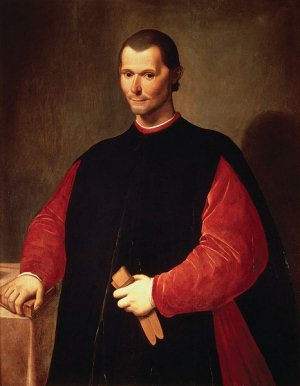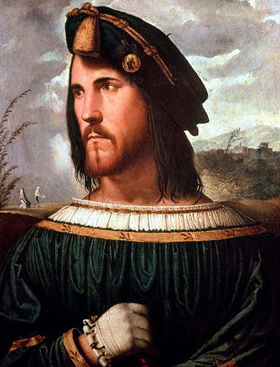So here are some web resources to better understand the Borgia's. Remember, just because it says it on the internet it doesn't mean it is true. There might be some parts that are true or partially true. And sometimes we just don't know and historians make their best guest. And sometimes...things are just wrong. So take everything with a grain of salt. (what a funny phrase...where does that phrase take it with a grain of salt come from...guess what...from an antidote to poison. )
1) Here is a virtual tour of the vatican. And a virtual tour of the Sistine Chapel by Michelangelo. I've been there -- it's amazing!
2) A great presentation about the Renaissance (you can't tell who did it..so it may not all be accurate). And a website that talks about the transition from medieval ages to the renaissance
3) There is a Colorado Renaissance festival...in Larkspur
4) Here is an article about Machiavelli, Da Vinci and Cesare Borgia. (you need a subscription so I copied it here)
What happened when a philosopher, an artist and a
ruthless warrior – all giants of the Renaissance – met on campaign in
northern Italy? Paul Strathern explains.
 Portrait of Niccolò Machiavelli by Santi di TitoDuring
the latter half of 1502, when the Italian Renaissance was at its
height, three of its most distinguished yet disparate figures travelled
together through the remote hilly region of the Romagna in north-eastern
Italy. Cesare Borgia (1475-1507), backed by his father Pope Alexander
VI (1431-1503), was leading a military campaign whose aim was to carve
out his own personal princedom. He had hired Leonardo da Vinci
(1452-1519) as his chief military engineer whose brief was to reinforce
the castles and defences in the region as well as to construct a number
of revolutionary new military machines, which he had designed in his
notebooks. Accompanying this unlikely duo was the enigmatic figure of
Niccolò Machiavelli (1469-1527), who had been despatched by the
Florentine authorities as an emissary to the travelling ‘court’ with
instructions to ingratiate himself with Borgia and, as far as possible,
discover his intentions towards Florence whose position to the west,
just across the Apennine mountains, left it particularly vulnerable to
Borgia’s territorial ambitions.
Portrait of Niccolò Machiavelli by Santi di TitoDuring
the latter half of 1502, when the Italian Renaissance was at its
height, three of its most distinguished yet disparate figures travelled
together through the remote hilly region of the Romagna in north-eastern
Italy. Cesare Borgia (1475-1507), backed by his father Pope Alexander
VI (1431-1503), was leading a military campaign whose aim was to carve
out his own personal princedom. He had hired Leonardo da Vinci
(1452-1519) as his chief military engineer whose brief was to reinforce
the castles and defences in the region as well as to construct a number
of revolutionary new military machines, which he had designed in his
notebooks. Accompanying this unlikely duo was the enigmatic figure of
Niccolò Machiavelli (1469-1527), who had been despatched by the
Florentine authorities as an emissary to the travelling ‘court’ with
instructions to ingratiate himself with Borgia and, as far as possible,
discover his intentions towards Florence whose position to the west,
just across the Apennine mountains, left it particularly vulnerable to
Borgia’s territorial ambitions.5) Here is an article about the Death of Cesare Borgia on March 12th, 1507.
 Alleged portrait of Cesare Borgia by Altobello Melone. Bergamo, Accademia Carrara. 1500-1524
Alleged portrait of Cesare Borgia by Altobello Melone. Bergamo, Accademia Carrara. 1500-1524The Borgias came from Spain originally and the most famous of them died there, killed at the age of thirty-one in a minor skirmish by attackers who did not even know who he was. Christened Cesare, which would give him the welcome opportunity to take Aut Caesar aut nihil (‘Either Caesar or nothing’) as his motto, he was one of the illegitimate sons of Pope Alexander VI by Vanozza Catanei. He was trained for the Church and made Archbishop of Valencia and a cardinal when still in his teens, but he was no godly pastor but a formidable man of action.
Brave, daring and determined, he was insatiably power-hungry and entirely ruthless. Murder, bribery and deceit were all in the day’s work to him and his pleasures were women, hunting and fashionable clothes. He was considered the handsomest man in Italy, there were inevitably rumours of incest with his sister Lucrezia and he had syphilis from his early twenties.
His father put Cesare in command of the papal army in 1496, when he was still only about twenty. In alliance with the French the two of them set out to bring the central Italian cities back under direct papal control and carve out an Italian kingdom for Cesare himself. Machiavelli, who greatly admired Cesare, believed that he would have succeeded if it had not been for Pope Alexander’s death in Rome of malaria in 1503 and the fact that Cesare himself came down with the disease as well and was temporarily put out of action. The doctors sank him in a huge jar of iced water as a cure and he somehow survived the shock, but the cardinals chose as the new pope a dedicated enemy of the Borgias, Giuliano della Rovere, who succeeded as Julius II.
When Italy was at last united in the nineteenth century, Cesare could be hailed as a forerunner of Italian unity, though his motives were entirely self-interested. He was now arrested and packed off to prison in Spain. He managed to escape and took service with his brother-in-law, King John of Navarre. He planned to return to Italy before long, but meanwhile there was a rebellion against King John to contend with and Cesare took command of a 5,000-strong Basque army to deal with the rebels.
One of the rebels was Luis de Beaumonte, lord of the castle of Viana. King John and Cesare set siege to the castle early in March. Commanded by de Beaumonte’s son, it seemed an easy target, weakly garrisoned and inadequately provisioned. However, on the night of the 11th, a Wednesday, de Beaumonte was able to get a convoy of mules carrying provisions into the castle under cover of a sudden torrential storm. Cesare, alerted, led seventy horsemen out to attack de Beaumonte and his escort, who were now riding away from the castle. In his eagerness he far outdistanced his men and the enemy spotted him and ambushed him in a ravine. Hopelessly outnumbered, he was dragged off his horse and overwhelmed. His killers stripped his armour off and left his naked, bloodstained body with the marks of at least twenty-five wounds showing he had sold his life dearly.
The attackers did not realize who Cesare was and de Beaumonte, when he discovered, was furious at the loss of an exceptionally valuable potential captive for ransom. Cesare’s men found the body and King John had it buried in the little parish church of Viana. The inscription on the marble tomb said: ‘Here in a scant piece of earth lies he whom all the world feared.’